Conservation of Gorillas: Balancing Social Structure and Conservation.
Conservation of Gorillas: Balancing Social Structure and Conservation.
Gorillas live in close-knit social groups, typically led by a dominant male known as a silverback. These groups are made up of multiple females and their offspring, with each group having a unique social structure and hierarchy. Gorillas communicate through a range of vocalizations, body language, and grooming behaviors, and social relationships are crucial for their well-being and survival.
Conservation efforts must take into account these complex social structures and behaviors. For example, conservation initiatives that disrupt gorilla social groups or separate individuals from their families can have negative impacts on their well-being and long-term survival. Ecotourism, for example, can provide important income for local communities and support conservation efforts, but it must be done responsibly and with the well-being of the gorillas in mind.
Another important consideration is the impact of human activities on gorilla habitats. Deforestation and habitat loss are major threats to gorillas, as well as other species, and conservation efforts must work to protect and restore these habitats. However, it is also important to recognize the role that local communities play in conservation efforts. Working with communities to develop sustainable livelihoods and protect gorilla habitats can be an effective way to support conservation efforts while also supporting the well-being of local communities.
Conservation efforts must also address the threats posed by poaching and the illegal wildlife trade. Poaching and the illegal wildlife trade are major threats to gorillas, as well as other endangered species. By working to reduce demand for wildlife products and strengthening law enforcement efforts to combat wildlife trafficking, conservation efforts can help protect gorillas from these threats.
In summary, conservation of gorillas requires a balance between protecting their complex social structures and behaviors, protecting their habitats, and addressing the threats posed by poaching and the illegal wildlife trade. By working with local communities, promoting sustainable development, and engaging in responsible ecotourism, we can support conservation efforts and help ensure the long-term survival of these incredible primates.
Gorilla social structure and conservation
Social Structure of Gorillas
Gorillas have a hierarchical social structure led by a dominant silverback male. This male is typically the largest and strongest of the group and is responsible for protecting his troop from external threats, such as predators or other gorilla groups. The silverback also plays an essential role in maintaining order within the group, mediating conflicts and ensuring that all members are fed and cared for.
Females in a gorilla troop typically remain with their birth group for life, forming strong bonds with their offspring and other females. Young males, on the other hand, will eventually leave their natal troop to form or join another group. This dispersal helps to prevent inbreeding and maintain genetic diversity within gorilla populations.
Troop Behavior and Communication
Gorillas exhibit complex social behavior and communication, which helps to maintain their social structure and facilitate cooperation within the group. They use a variety of vocalizations, body language, and gestures to communicate with one another, including grunts, roars, chest beats, and facial expressions.
Gorillas also engage in grooming behavior, which serves to strengthen social bonds within the group and promote hygiene. Grooming involves one gorilla picking through the fur of another to remove parasites and dead skin cells, as well as providing a calming and affectionate experience for both individuals.
Conservation of Gorillas
Gorillas are threatened by habitat loss, poaching, disease, and other human impacts. As a result, conservation efforts are critical to ensuring the survival of these magnificent animals. The conservation of gorillas involves a range of strategies, including habitat protection, anti-poaching measures, and community outreach and education.
One approach to gorilla conservation is ecotourism, which provides economic benefits to local communities and incentivizes the preservation of gorilla habitats. In addition, efforts are being made to promote sustainable agriculture and alternative livelihoods to reduce pressure on gorilla habitat and prevent human-wildlife conflicts.
Population management is also crucial for the conservation of gorillas, with programs focused on maintaining genetic diversity and managing the movement of individuals between groups. The study of gorilla social structure and behavior is essential in informing these management strategies and ensuring the long-term survival of these amazing animals.
In conclusion, the social structure of gorillas plays a crucial role in their conservation. Understanding their behavior and communication helps to inform management strategies, while conservation efforts focused on habitat protection, community outreach, and population management are essential for their survival. With continued conservation efforts and scientific research, we can ensure that gorillas continue to thrive for generations to come.
Gorilla community conservation
Community-based Conservation for Gorillas
Community-based conservation is a conservation approach that involves working with local communities to promote sustainable resource use, environmental education, and conservation efforts. This approach recognizes that local communities are often the best stewards of their own natural resources and that conservation efforts must consider the needs and aspirations of local people.
In the case of gorilla conservation, community-based conservation involves working with local communities to protect gorilla habitat, reduce human-wildlife conflicts, and promote sustainable livelihoods. This approach recognizes that the conservation of gorillas is inextricably linked to the well-being of local communities, and that their support is essential for the long-term success of conservation efforts.
Protecting Gorilla Habitat
Habitat loss is one of the most significant threats to gorilla populations. The destruction of forests for agriculture, logging, and mining has led to a significant reduction in the range and quality of gorilla habitats. Community-based conservation efforts are focused on protecting gorilla habitat by working with local communities to promote sustainable land use practices, such as agroforestry and sustainable logging.
Reducing Human-Wildlife Conflicts
Human-wildlife conflicts, such as crop raiding by gorillas, can lead to retaliatory killings and other forms of violence. Community-based conservation efforts are focused on reducing human-wildlife conflicts by promoting measures such as the use of deterrents, such as chili peppers, to discourage gorillas from entering crop fields, and the provision of alternative food sources.
Promoting Sustainable Livelihoods
Sustainable livelihoods are essential for the long-term success of gorilla conservation efforts. Community-based conservation efforts are focused on promoting sustainable livelihoods by providing training and support for eco-tourism, sustainable agriculture, and alternative income-generating activities. These efforts help to reduce the pressure on gorilla habitats and provide economic benefits to local communities.
Educating Communities on Conservation
Environmental education is an essential component of community-based conservation efforts. By educating local communities on the importance of gorilla conservation and the benefits of sustainable land use practices, community members can become active participants in conservation efforts. Educational programs are focused on promoting awareness of gorilla conservation, encouraging community involvement in conservation activities, and fostering a sense of stewardship for the natural environment.
Conclusion
Community-based conservation is an essential component of gorilla conservation efforts. By working with local communities to protect gorilla habitats, reduce human-wildlife conflicts, promote sustainable livelihoods, and provide environmental education, we can ensure the long-term survival of these incredible animals. With continued community-based conservation efforts, we can protect gorillas and their habitats for generations to come.
Gorilla species
Eastern Gorilla
The Eastern gorilla is found in the mountainous regions of Rwanda, Uganda, and the Democratic Republic of Congo. There are two subspecies of Eastern gorilla: the mountain gorilla and the eastern lowland gorilla. The mountain gorilla is the more well-known subspecies and is known for its long, thick fur, which helps it survive in its high-altitude habitat. There are only around 1,000 mountain gorillas left in the wild, making them one of the world's most endangered animals. The eastern lowland gorilla, also known as Grauer's gorilla, is found at lower elevations in the Democratic Republic of Congo. They are larger than mountain gorillas but have shorter fur.
Western Gorilla
The Western gorilla is found in the forests of West and Central Africa. There are two subspecies of Western gorilla: the western lowland gorilla and the Cross River gorilla. The western lowland gorilla is the most common and widespread subspecies, found in the rainforests of West and Central Africa. They are smaller than Eastern gorillas but are still the largest primates in the world. The Cross River gorilla is the rarest of all gorilla subspecies, with only around 300 individuals remaining in the wild. They are found in the mountainous forests of Cameroon and Nigeria.
Gorilla Behavior
Gorillas are social animals that live in family groups, called troops, led by a dominant male, known as a silverback. Gorillas are herbivores and spend much of their time foraging for food, which includes leaves, stems, fruit, and bark. Gorillas are also known for their intelligence, with the ability to use tools, communicate through a variety of vocalizations, and even show emotions such as grief and compassion.
Conservation of Gorillas
Both species of gorilla are critically endangered, and conservation efforts are essential to ensure their survival. Threats to gorilla populations include habitat loss, poaching, and disease, and conservation efforts are focused on protecting gorilla habitats, reducing human-wildlife conflicts, and promoting sustainable livelihoods for local communities. Community-based conservation, which involves working with local communities to promote conservation and sustainable development, is an important aspect of gorilla conservation efforts.
In conclusion, there are two species of gorilla: the Eastern gorilla and the Western gorilla, both of which are critically endangered due to habitat loss, poaching, and disease. Conservation efforts are focused on protecting gorilla habitats, reducing human-wildlife conflicts, and promoting sustainable livelihoods for local communities. With continued conservation efforts, we can ensure the survival of these incredible animals for generations to come.
Gorilla habitat
Eastern Gorilla Habitat
The Eastern gorilla is found in the mountainous regions of Rwanda, Uganda, and the Democratic Republic of Congo. Their habitat includes the bamboo forests of the Virunga Mountains and the rainforests of the Congo Basin. Mountain gorillas inhabit high-altitude forests, where they are able to survive in cooler temperatures. Eastern lowland gorillas are found at lower elevations in the dense rainforests of the Congo Basin.
Western Gorilla Habitat
The Western gorilla is found in the rainforests of West and Central Africa. Their habitat includes the tropical rainforests of Cameroon, Central African Republic, Congo, Equatorial Guinea, Gabon, and Nigeria. Western lowland gorillas are found in lowland forests, while Cross River gorillas inhabit mountainous forests.
Gorilla Habitat Destruction
Gorilla populations have declined significantly in recent years due to habitat loss and degradation. Deforestation, human settlement, mining, and agriculture have all contributed to the destruction of gorilla habitat. As forests are cleared, gorillas are left without their natural food sources and are forced to move to new areas, where they may be at greater risk of conflict with humans.
Gorilla Habitat Protection
Conservation efforts are focused on protecting gorilla habitat and ensuring that gorillas have access to the resources they need to survive. Protected areas, such as national parks and reserves, provide critical habitat for gorillas, as well as other threatened species. Efforts are also being made to promote sustainable land use practices and reduce human-wildlife conflicts. This includes working with local communities to develop alternative livelihoods that do not depend on the destruction of gorilla habitat.
In conclusion, gorillas inhabit the dense tropical forests of Central and East Africa, including the rainforests of West and Central Africa and the mountainous regions of Rwanda, Uganda, and the Democratic Republic of Congo. Gorilla habitat is threatened by deforestation, human settlement, mining, and agriculture. Conservation efforts are focused on protecting gorilla habitat and ensuring that gorillas have access to the resources they need to survive.
Gorilla behavior
Family structure
Gorillas live in family groups consisting of one dominant male, several females, and their offspring. The dominant male, also known as the silverback, is responsible for protecting the group and making important decisions, such as where to go to find food and shelter. Females stay with the group they were born into, while males leave to form their own groups.
Communication
Gorillas communicate with each other using a variety of vocalizations, facial expressions, and body language. They make a range of sounds, including grunts, hoots, and screams, to convey different messages. For example, a gorilla may use a low grunt to communicate contentment, while a high-pitched scream may signal distress.
Feeding behavior
Gorillas are herbivores that primarily eat leaves, shoots, and fruits. They have a specialized digestive system that allows them to extract nutrients from tough plant material. Gorillas spend a significant portion of their day foraging for food and may travel long distances to find the resources they need.
Play behavior
Gorillas engage in play behavior, which helps them develop social bonds and physical coordination. Young gorillas often play together, wrestling and chasing each other. Adult gorillas may also play, engaging in mock fights or playing with objects in their environment.
Nest-building behavior
Gorillas build nests each night to sleep in. They use branches and leaves to construct the nests, which are typically built in trees or on the ground. Nest-building behavior is important for the social bonds within the group, as gorillas may share nests with family members or other members of their troop.
Conflict resolution
Gorillas have a complex social structure that can lead to conflicts within their group. When conflicts arise, gorillas may use a variety of strategies to resolve them, such as intimidation displays or physical aggression. However, conflicts are often resolved through more subtle communication, such as facial expressions and vocalizations.
In conclusion, gorillas are highly social animals that live in family groups and communicate with each other using a variety of vocalizations, facial expressions, and body language. They are herbivores that spend a significant portion of their day foraging for food and engage in play behavior to develop social bonds and physical coordination. Gorillas build nests each night to sleep in, and conflicts within their group are often resolved through communication and conflict resolution strategies.
Gorilla diet
Here are some key aspects of the gorilla diet:
Vegetation
Gorillas primarily eat vegetation, including leaves, stems, and shoots. They also consume bark and the pith of woody plants. Gorillas have been observed eating over 100 different plant species, depending on what is available in their environment.
Fruits
Fruit is an important part of the gorilla diet, particularly for lowland gorillas. Fruits provide important nutrients and energy and are often a seasonal food source. Some of the fruits that gorillas eat include figs, berries, and citrus fruits.
Insects
While gorillas are primarily herbivores, they have been known to occasionally eat insects. They may consume ants, termites, and other insects when they are available.
Water
Gorillas get most of the water they need from the food they eat. They may also drink from rivers, streams, or pools of water.
Nutritional requirements
Gorillas have high nutritional requirements due to their large size and active lifestyles. They need to consume a large amount of vegetation to meet their energy needs. Gorillas require a diet that is high in fiber and low in protein and fat.
Feeding behavior
Gorillas spend a significant portion of their day foraging for food. They may travel long distances to find the resources they need, and they may consume up to 40 pounds of vegetation per day. Gorillas use their powerful jaws and teeth to crush tough plant material and extract nutrients.
In conclusion, the gorilla diet is primarily plant-based, with a focus on vegetation such as leaves, shoots, and fruits. They also occasionally eat insects and get most of the water they need from the food they eat. Gorillas have high nutritional requirements due to their large size and active lifestyles, and they may consume up to 40 pounds of vegetation per day. Gorillas use their powerful jaws and teeth to extract nutrients from tough plant material.
Gorilla communication
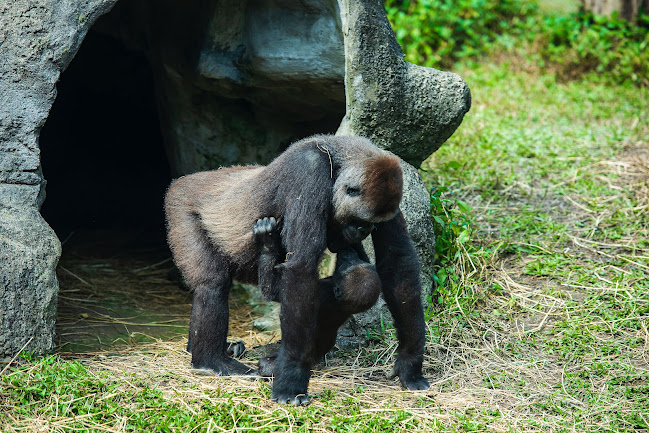 |
Here are some key aspects of gorilla communication:
Vocalizations
Gorillas are capable of making a variety of vocalizations to communicate with one another. These include grunts, hoots, barks, and roars. Each vocalization has a distinct meaning and can be used to express emotions such as fear, anger, and contentment.
Gestures
Gorillas also use a variety of gestures to communicate with each other. These include chest-beating, arm-swinging, and head-nodding. Chest-beating is a particularly impressive gesture that is used to establish dominance or to attract a mate.
Facial Expressions
Gorillas use facial expressions to communicate their emotions to other members of the troop. They may use facial expressions to signal aggression, fear, or contentment.
Body Language
Gorillas use body language to communicate their intentions and establish social hierarchies. For example, a gorilla may display a submissive posture to a dominant individual, while a dominant gorilla may stand upright and make themselves appear larger to intimidate a subordinate.
Contextual Communication
Gorillas also use communication in a contextual manner. For example, a mother gorilla may use a specific vocalization to call her infant, while a male gorilla may use a different vocalization to assert dominance over a rival.
Communication between Troops
Gorillas may also communicate with members of other troops, particularly during inter-group encounters. These encounters can be aggressive, and communication is important to avoid conflict and establish boundaries.
In conclusion, gorillas use a variety of vocalizations, gestures, facial expressions, and body language to communicate with one another. Communication is essential for maintaining social bonds, establishing dominance hierarchies, and navigating complex social environments. Gorillas also use communication in a contextual manner and may communicate with members of other troops during inter-group encounters. Understanding gorilla communication is essential for understanding their behavior and social organization.
Gorilla conservation
Here are some key aspects of gorilla conservation:
Habitat Protection
Gorillas rely on a range of forest habitats to survive, including tropical rainforests, montane forests, and bamboo forests. Deforestation and habitat destruction due to human activities, such as logging and agriculture, are major threats to gorillas. Gorilla conservation efforts aim to protect these habitats through the creation of national parks and reserves, as well as through community-based conservation initiatives.
Anti-Poaching Measures
Poaching is a significant threat to gorillas, as they are often hunted for their meat or captured for the illegal wildlife trade. Gorilla conservation efforts include anti-poaching patrols, wildlife law enforcement, and the confiscation of illegally traded animals. Community engagement is also essential, as local communities can help to prevent poaching by reporting suspicious activity and promoting wildlife conservation.
Disease Prevention
Gorillas are vulnerable to a range of diseases, including those transmitted by humans. Gorilla conservation efforts include disease surveillance and prevention, as well as education programs aimed at reducing the risk of disease transmission from humans to gorillas.
Research and Monitoring
Effective gorilla conservation relies on accurate information about the size and distribution of gorilla populations, as well as their behavior and ecology. Research and monitoring programs provide critical data for conservation efforts, including population surveys, behavioral studies, and ecological monitoring.
Community Engagement
Local communities play a crucial role in gorilla conservation, as they share the forests with gorillas and are often responsible for managing natural resources. Gorilla conservation efforts include community engagement and capacity building initiatives, such as sustainable agriculture and ecotourism programs, that provide economic benefits to local communities and promote sustainable resource use.
International Cooperation
Gorilla conservation is a global issue that requires international cooperation and collaboration. International organizations such as the World Wildlife Fund, the Wildlife Conservation Society, and the International Union for Conservation of Nature work with local governments and communities to develop and implement conservation strategies.
In conclusion, gorilla conservation involves a range of strategies, from habitat protection to community engagement and anti-poaching measures. Effective conservation efforts require the cooperation and collaboration of local communities, international organizations, and governments. Gorilla conservation is critical to ensuring the survival of these great apes and the preservation of the forest habitats that they depend on.
Gorilla threats
Habitat Loss and Fragmentation
The primary threat to gorillas is habitat loss and fragmentation due to deforestation, agricultural expansion, and human settlement. Gorillas rely on forests for food, shelter, and protection from predators. As forests are cleared, gorillas lose their habitat and become isolated in small, fragmented areas, making them more vulnerable to poaching and disease.
Poaching
Gorillas are often hunted for their meat, which is considered a delicacy in some cultures. Gorilla infants are also captured and sold as pets or for use in the illegal wildlife trade. Poaching has contributed to the decline of all gorilla species.
Disease
Gorillas are susceptible to diseases transmitted by humans, including respiratory infections, measles, and Ebola. Gorillas can contract these diseases through direct contact with humans or human waste, or through contact with other animals that have been in contact with humans.
Climate Change
Climate change is affecting gorilla habitats by altering rainfall patterns, causing prolonged droughts, and increasing the frequency and severity of forest fires. These changes can impact the availability of food and water for gorillas and other wildlife, and may also increase the risk of disease outbreaks.
Mining and Resource Extraction
Mining and other resource extraction activities can destroy gorilla habitats and disrupt their social structures. The construction of roads and other infrastructure can also fragment gorilla habitats, making them more vulnerable to poaching and disease.
Human-Wildlife Conflict
As human populations continue to expand into gorilla habitats, conflicts between people and gorillas can arise. Gorillas may raid crops or damage property, leading to retaliation by humans. These conflicts can result in the killing or capture of gorillas.
In conclusion, gorillas face numerous threats that are contributing to their declining populations. These threats include habitat loss and fragmentation, poaching, disease, climate change, mining and resource extraction, and human-wildlife conflict. Effective conservation efforts are needed to address these threats and ensure the survival of gorillas and the forest habitats they depend on.
Gorilla reproduction
Mating:
Gorillas are social animals, and they form complex family groups. Adult male gorillas, known as silverbacks, are the dominant members of the group and usually mate with several females. Females will mate with the silverback when they are ovulating, which occurs approximately every 28 days. When the female is in estrus, she will display sexual receptivity by presenting herself to the male.
Pregnancy:
Gorilla females have a menstrual cycle similar to humans. Once fertilization occurs, the gestation period lasts for around 8.5 months. Gorilla mothers give birth to one baby at a time, and twins are extremely rare. Newborn gorillas are helpless and weigh only around 3 to 4 pounds. The mother will nurse her baby for up to four years, during which time the infant will cling to the mother's fur.
Parenting:
Gorilla mothers are very protective of their young and will carry them around until they are strong enough to walk. The mother will also nurse the infant and teach it how to forage for food. As the baby gorilla grows, it will spend more time with other members of the family group, including siblings, aunts, uncles, and cousins. Male gorillas are not typically involved in parenting, but they will protect the group from predators and other threats.
Challenges:
Gorillas face several challenges to their reproductive success. Habitat loss and fragmentation can isolate gorilla groups, leading to inbreeding and reduced genetic diversity. Poaching and disease can also impact gorilla populations, making it difficult for females to find suitable mates. In addition, climate change can affect the availability of food and water, which can impact female fertility and the survival of infants.
Conservation:
Effective conservation efforts are necessary to protect gorilla populations and their habitats. These efforts include habitat restoration, anti-poaching measures, and disease monitoring and prevention. Conservationists also work to raise awareness about the importance of protecting gorillas and their habitats, including through ecotourism and education programs.
In conclusion, gorilla reproduction is a critical aspect of their species' survival. Gorillas form complex family groups, and females mate with the dominant male, the silverback. Once pregnant, the mother carries the baby for approximately 8.5 months and nurses it for up to four years. Gorillas face several challenges to their reproductive success, including habitat loss, poaching, and disease. Effective conservation efforts are necessary to protect gorilla populations and ensure their continued survival.
Gorilla intelligence
One measure of intelligence is the ability to use tools. Gorillas have been observed using sticks as tools to gauge the depth of water or to help them balance while walking through a swamp. They have also been observed using leaves as makeshift cups to scoop water from streams.
Gorillas also demonstrate impressive communication skills. They use a variety of vocalizations, including grunts, hoots, and barks, to communicate with one another. They can also use gestures, such as chest beating, to communicate aggression or dominance.
Studies have also shown that gorillas are capable of problem-solving and critical thinking. For example, they have been observed dismantling traps set by poachers, indicating an understanding of cause and effect. They have also been shown to exhibit "insight," the ability to solve a problem by applying previously learned knowledge to a new situation.
In addition to their cognitive abilities, gorillas are also known for their emotional intelligence. They are capable of expressing a wide range of emotions, including happiness, sadness, fear, and anger. They are also known to be highly social animals, forming close bonds with other members of their group.
Despite their intelligence, gorillas face a number of threats to their survival, including habitat loss, poaching, and disease. Conservation efforts are underway to protect these intelligent and complex animals and ensure their survival for generations to come.
What we can do to save the Gorilla?
Support conservation organizations: Many organizations work to protect gorillas and their habitats, including the Dian Fossey Gorilla Fund, the Jane Goodall Institute, and the World Wildlife Fund. Consider making a donation or volunteering your time to support their efforts.
Choose sustainable products: Deforestation and habitat loss are major threats to gorillas. By choosing products that are sustainably sourced, you can help reduce the demand for products that contribute to deforestation.
Support ecotourism: Gorilla trekking can be an important source of income for local communities and a way to support conservation efforts. However, it is important to choose responsible and sustainable tours that prioritize the well-being of the gorillas and their habitats.
Reduce your carbon footprint: Climate change is contributing to the loss of gorilla habitats, as well as other negative impacts on the environment. By reducing your carbon footprint through actions like using public transportation, eating a plant-based diet, and reducing energy use, you can help mitigate these impacts.
Raise awareness: Educating others about the importance of gorilla conservation can help increase support for conservation efforts. Share information about the threats facing gorillas and what individuals can do to help.
Support community-led conservation: Working with local communities to develop sustainable livelihoods and protect gorilla habitats can be an effective way to support conservation efforts. Supporting community-led initiatives and sustainable development projects can help ensure that gorillas and their habitats are protected for the long term.
Avoid purchasing products made from wildlife: Poaching and the illegal wildlife trade are major threats to gorillas, as well as other endangered species. By avoiding products made from wildlife, such as bushmeat, ivory, and exotic pets, you can help reduce demand for these products and the harm caused to wildlife.
By taking these actions, we can all do our part to help save the gorilla and ensure that this incredible species survives for generations to come.
Here Is some FAQ:
1. What is the average lifespan of a gorilla?
Gorillas can live up to 35-50 years in the wild and up to 60 years in captivity.
2. What do gorillas eat?
Gorillas are herbivores and primarily eat fruits, leaves, stems, and flowers.
3. Are gorillas endangered?
Yes, gorillas are endangered due to habitat loss, poaching, and disease.
4. How do gorillas communicate with each other?
Gorillas communicate through a range of vocalizations, body language, and grooming behaviors.
5. How do gorillas socialize with each other?
Gorillas live in close-knit social groups, typically led by a dominant male known as a silverback. These groups are made up of multiple females and their offspring, with each group having a unique social structure and hierarchy.
6. Why are gorillas important for ecosystems?
Gorillas play an important role in their ecosystems by dispersing seeds and maintaining the health and diversity of the forest.
7. What can be done to help save gorillas?
Efforts to protect gorillas involve a range of conservation efforts, such as protecting their habitats, reducing demand for wildlife products, and engaging in responsible ecotourism. Supporting organizations that work to protect gorillas and their habitats, as well as promoting sustainable development in local communities, can also be effective in helping to save gorillas.

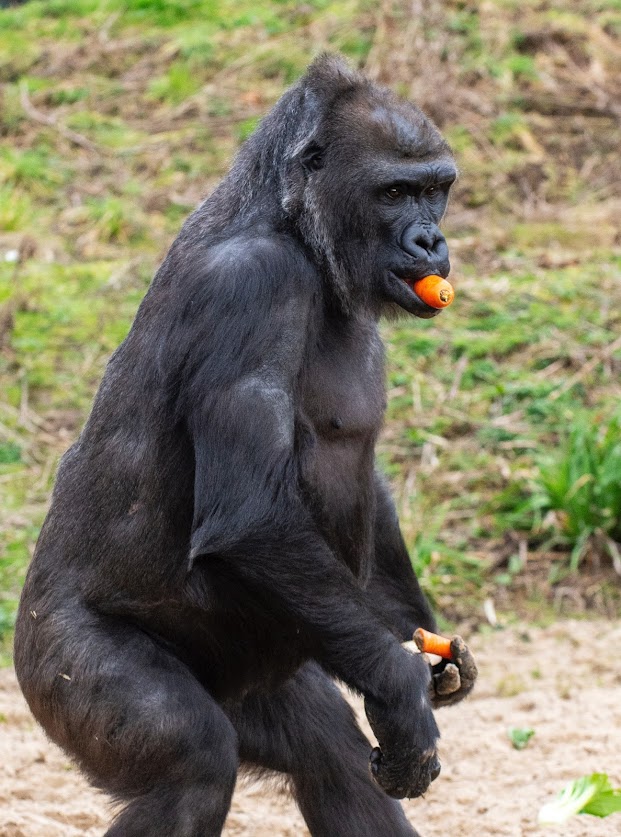
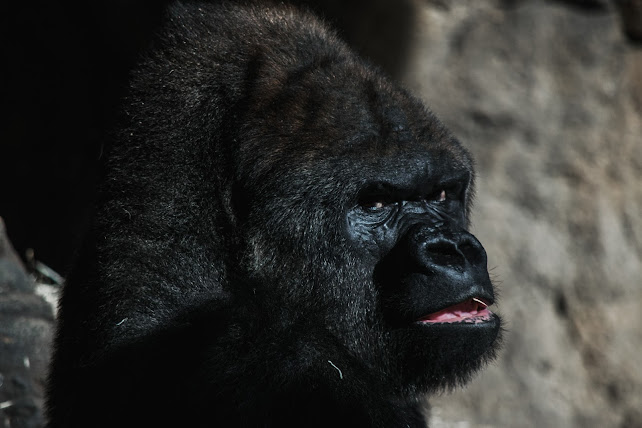
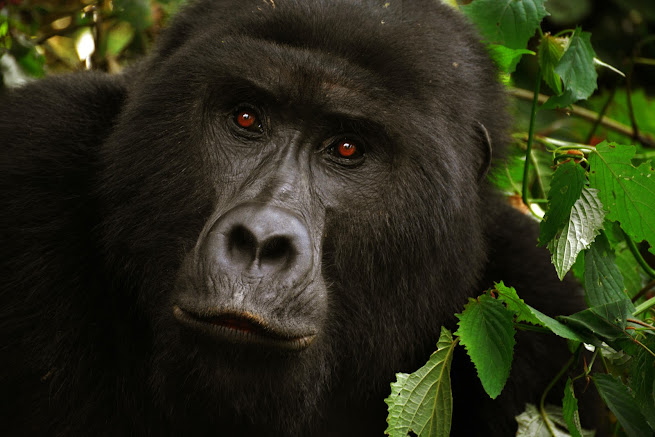


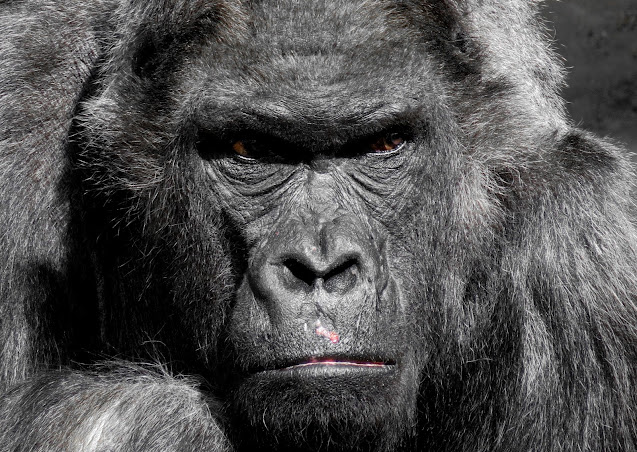
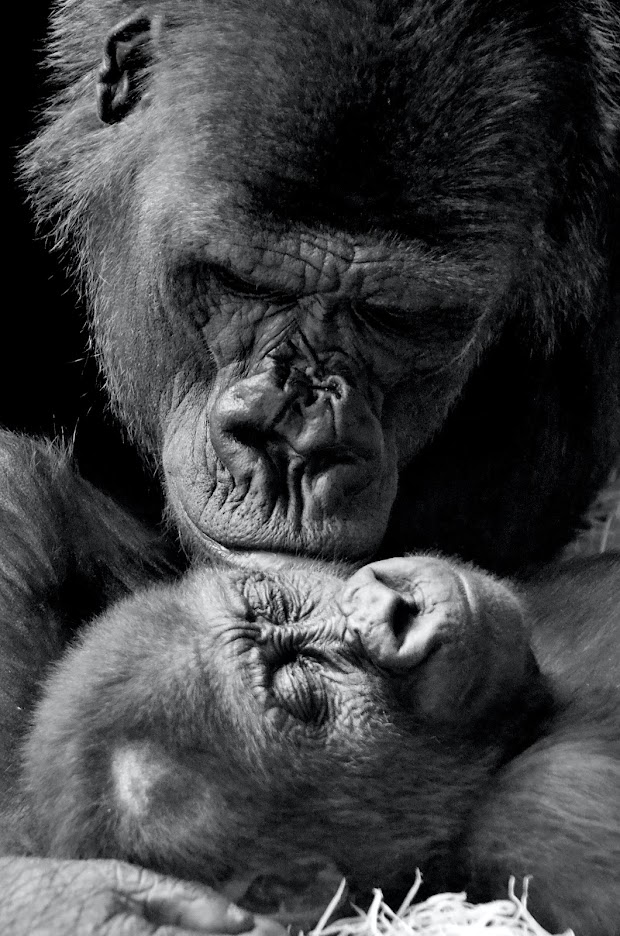
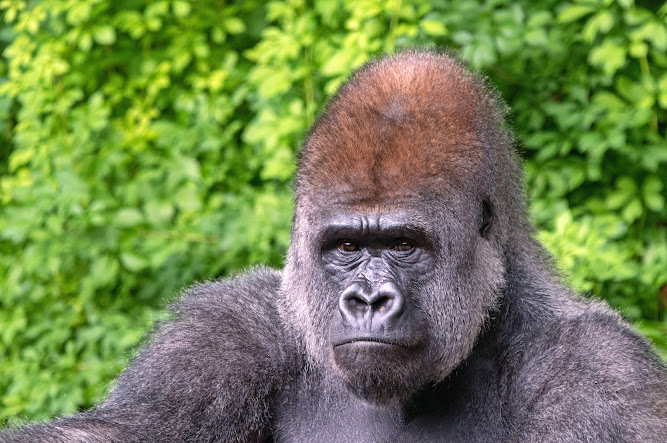
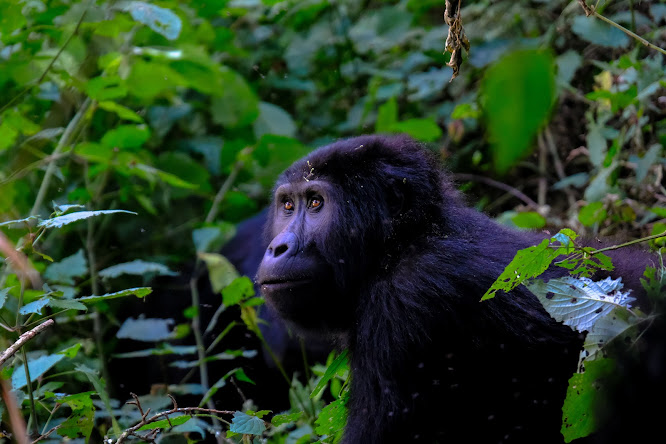

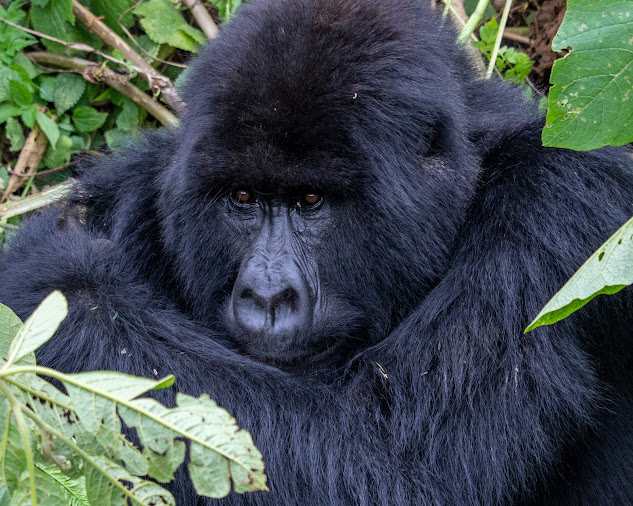

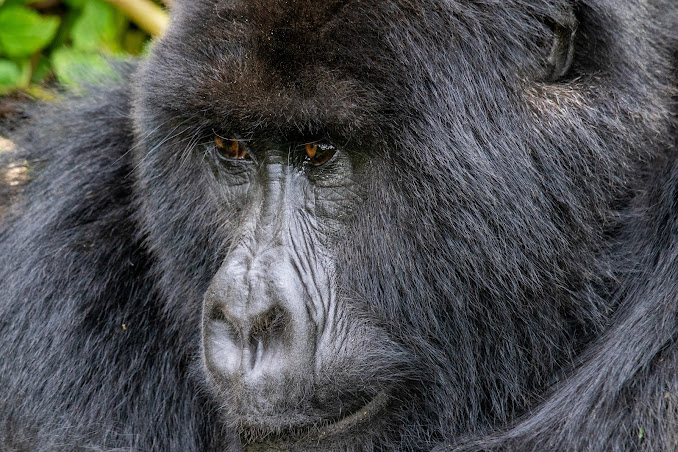



Comments
Post a Comment